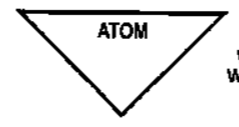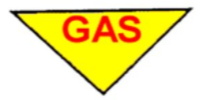![]()
![]()
![]()
Use LEFT and RIGHT arrow keys to navigate between flashcards;
Use UP and DOWN arrow keys to flip the card;
H to show hint;
A reads text to speech;
68 Cards in this Set
- Front
- Back
|
1. What does JSLIST stand for? |
Joint - Service Lightweight Integrated Suit Technology
|
|
|
2. What does MOPP stand for?
|
Mission Oriented Protective Posture
|
|
|
3. When under an NBC attack, when do you give the warning?
|
After you put on your mask.
|
|
|
4. What are proper masking procedures?
|
1. HOLD breath & CLOSE eyes
2. Put on MASK 3. CLEAR mask 4. CHECK mask seal 5. ALERT others 6. CONTINUE the mission |
|
|
5. What does CBRN stand for?
|
Chemical
Biological Radiological Nuclear |
|
|
6. NBC hazards are classified into 2 categories, what are they?
|
1. Immediate
2. Residual |
|
|
7. What will replace the nerve agent antidote kit(NAAK), based on shelf life expiration dates?
|
The Antidote Treatment Nerve Agent Auto-injector (ATNAA).
|
|
|
8. What is the number of Antidote treatment nerve agent auto-injector that must be given for 1st aid treatment for nerve agent poisoning?
|
3
|
|
|
9. What is the number of nerve agent antidote kits that must be given as 1st aid treatment for nerve agent poisoning?
|
3
|
|
|
10. What are 3 types of alarms and signals used to indicate NBC hazards?
|
1. AUDIBLE ALARMS
2. AUTOMATIC ALARMS 3. VISUAL SIGNALS |
|
|
11. What FM covers NBC operations?
|
FM 3-11
|
|
|
12. What FM covers NBC protection?
|
FM 3-11.4
|
|
|
13. What FM covers NBC decontamination?
|
FM 3-5
|
|
|
14. What is FM 3-7?
|
NBC handbook
|
|
|
15. What forms do Chemical agents come in?
|
1. Vapor
2. Solid 3. Liquid 4. Gas |
|
|
16. Soldiers in MOPP4 may lose how much water per hour through perspiration?
|
1 quart or more.
|
|
|
17. When fitting a protective mask, in what sequence should the straps be tightened?
|
1. Forehead
2. Cheek 3. Temple |
|
|
18. Which of the NBC reports is most widely used?
|
NBC 1.
|
|
|
19. What are 3 types of procedures for MOPP gear exchange?
|
Individual
Buddy & Triple Buddy team |
|
|
20. What are 3 fundamentals of NBC attack?
|
1. Avoid contamination
2. Protection 3. Decontamination |
|
|
21. How long should you apply pressure when using the Auto-injector?
|
10 seconds.
|
|
|
22. The Pro Mask will not protect against what 2 kinds of vapors/gases?
|
1. Ammonia
2. Co2 |
|
|
23. Once a unit has masked, who can make the decision to unmask?
|
The unit Commander
|
|
|
24. What is the shape of contamination markers?
|
Triangle.
|
|
|
25. What type of an attack does an M-22 ACADA alert you of?
|
Chemical
|
|
|
26. What are the 3 levels of Decontamination?
|
1. Immediate
2. Operational 3. Thorough |
|
|
27. How often should you check your pro-mask during peacetime?
|
Before, during & after training events
monthly and semi-annually. The MINIMUM is MONTHLY. |
|
|
28. What are the 9 MILD symptoms of nerve agent poisoning?
|
1. runny nose
2. headache 3. drooling 4. dimness of vision 5. difficulty breathing 6. localized sweating & muscle twitching 7. Stomach ache 8. nausea 9. irregular pulse/heartbeat |
|
|
29. When crossing a contaminated area, what 2 things should you avoid doing?
|
1. stirring up dust
2. touching anything |
|
|
30. Of these 3, Nerve, Blood and Blister agents; which causes the most casualties?
|
Nerve agents.
|
|
|
31. How should an area suspected of contamination be crossed?
|
Quickly, avoiding depressions and vegetation.
|
|
|
32. What are the 3 effects of Nuclear explosion?
|
1. Blast
2. Heat 3. Radiation |
|
|
33. What is the color of a Nuclear (Radiological)contamination marker?
|

White background with the word ATOM in black.
|
|
|
34. What is the current US policy regarding the use of Nuclear assets?
|
Last resort, use only if necssary.
|
|
|
35. What are Flash Burns?
|
Burns from the flash of thermal radiation from the fireball.
|
|
|
36. What causes the most casualties in a nuclear attack?
|
The initial blast and the heat of detonation.
|
|
|
37. What is the difference between dose RATE and TOTAL dose?
|
DOSE RATE= Radiation / Hour |
|
|
38. Who has the authority to order the use of Nuclear weapons?
|
Only the President of the US.
|
|
|
39. What are 3 types of Nuclear blast?
|
1. Air
2. Ground 3. Subsurface |
|
|
40. What does an AV VDR-2 detect and measure?
|
Nuclear radiation
from fall-out and radioisotopes. |
|
|
41. An NBC 1 report is used to determine what?
|
The initial detection of NBC weapons usage by the enemy.
|
|
|
42. What FM cover Nuclear contamination avoidance?
|
FM 3-11.3
|
|
|
43. For maximum radiation effect, which nuclear burst would you use?
|
Air burst.
|
|
|
44. What is the best way to protect against Biological agents?
|
Personal Hygiene.
|
|
|
45. What is a vector?
|
An insect used to disseminate biological agents.
|
|
|
46. What is the current US policy regarding the use of Biological assets?
|
NO USE.
|
|
|
47. What is meant by Biological Warfare?
|
the intentional use, by the enemy, of germs or toxins to cause death & disease among personnel, animals, plants or to deteriorate material.
|
|
|
48. What is the color of a Biological contamination marker?
|

Blue background
BIO in red letters. |
|
|
49. What does FM 3-3 cover?
|
CBRN contamination avoidance.
|
|
|
50. What are 4 types of micro organisms found in Biological agents?
|
1. Bacteria
2. Fungi 3. Rickettsiae 4. Viruses |
|
|
51. What is the best Decontamination for Biological agent?
|
Warm soapy water.
|
|
|
52. Where would a Biological attack be most effective?
|
Cities, large troop concentrations, animals and vegetable crops.
|
|
|
53. How may Chemical agents be deployed?
|
1. Arterial Spray
2. Artillery Bombs 3. Individual Mines & Rockets |
|
|
54. What are the most effective times to use Chemical agents?
|
Evening and early morning
DUSK & DAWN), lack of wind & sun allows agents to persist. |
|
|
55. Chemical agents are classified by the US into 3 categories, what are they?
|
1. Persistent
2. Non-persistent 3. Dusty |
|
|
56. What is the current US policy regarding the use of Chemical assets?
|
No FIRST Use.
|
|
|
57. What is the color of the Chemical contamination marker?
|

Yellow background
GAS in red. |
|
|
58. What are 4 types of Chemical agents?
|
Blister Blood Choking Nerve |
|
|
60. What is worn at MOPP-1?
|
Suit
field gear
|
|
|
61. What is worn at MOPP-2?
|
Suit
field gear boots
|
|
|
62. What is worn at MOPP-3?
|
suit,
field gear, boots, mask & hood
|
|
|
63. What is worn or carried at MOPP-4?
|
EVERYTHING
field gear, boots, mask hood, & gloves |
|
|
59. When would you use MOPP-0?
|
Periods of increased alert, when the enemy has CB employment capability, but there is no indication of use in the immediate future.
|
|
|
64. When would MOPP-1 be used?
|
When a CB attack is POSSIBLE, pre-attack.
|
|
|
65. When would MOPP-2 be used?
|
When a CB attack is LIKELY, pre-attack.
|
|
|
66. When would MOPP-3 be used?
|
Used in areas with NO CONTACT HAZARD or significant vapor hazard, POST-ATTACK.
|
|
|
67. When would MOPP-4 be used?
|
When highest degree of protection is required, when CB agents are present but actual hazard has NOT been determined. DURING & POST-ATTACK.
|
|
|
68. What are the 5 levels of Mission Oriented Protective Posture (MOPP)?
|
1. MOPP-0
2. MOPP-1 / Suit & Field Gear 3. MOPP-2 / + Boots 4. MOPP-3 / +Mask & Hood 5. MOPP-4 / +Gloves 6 Total Items |

